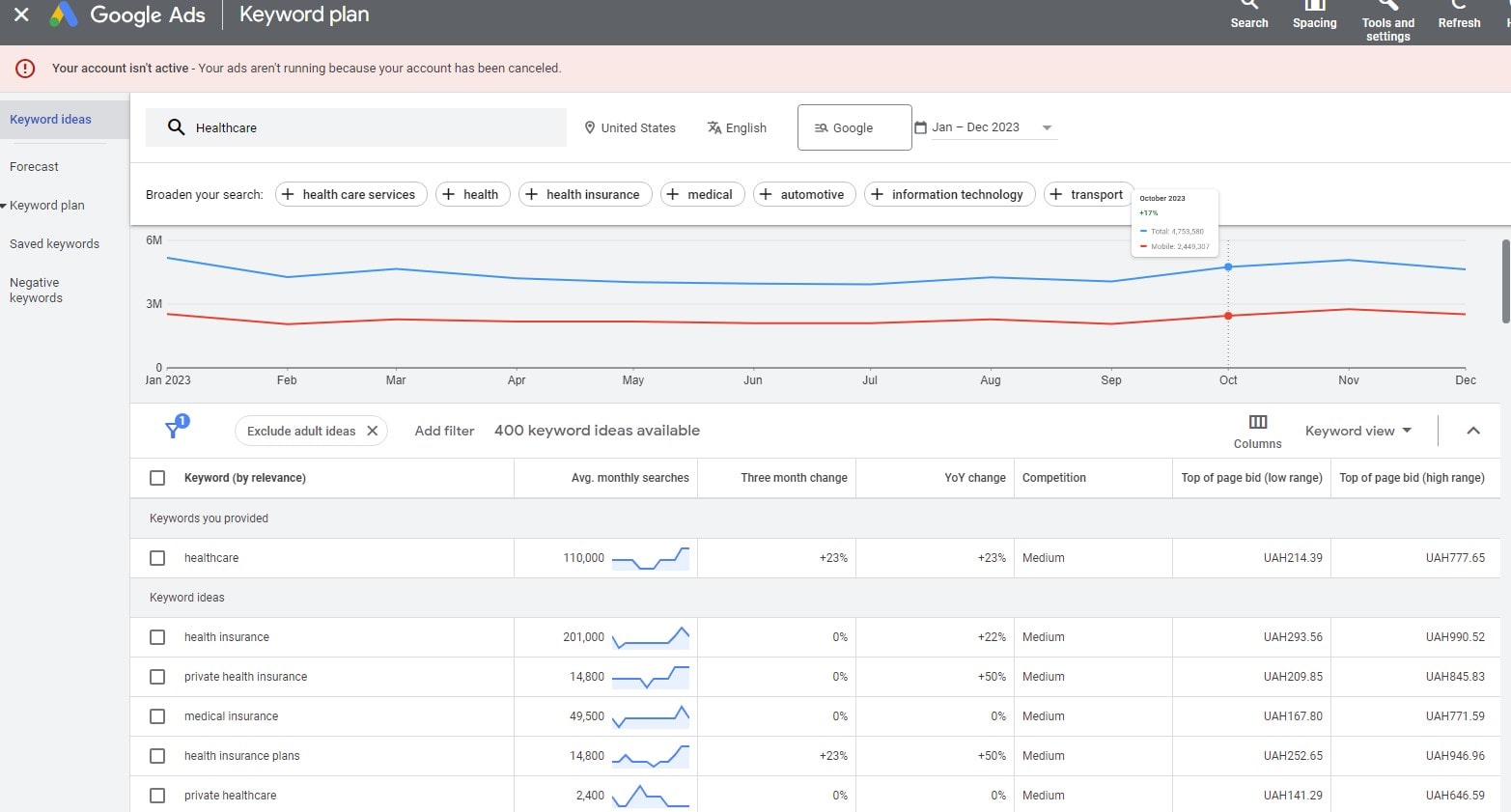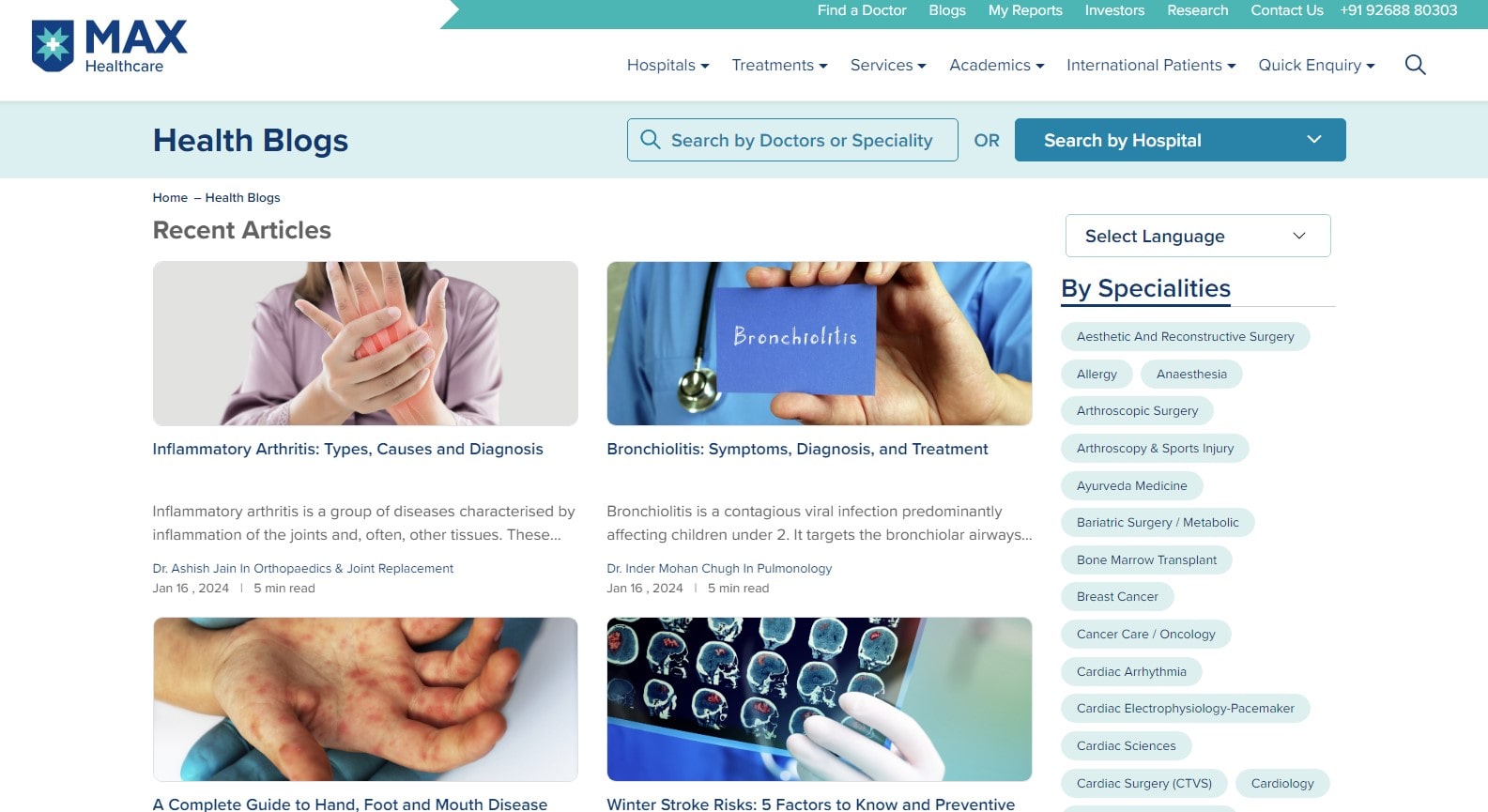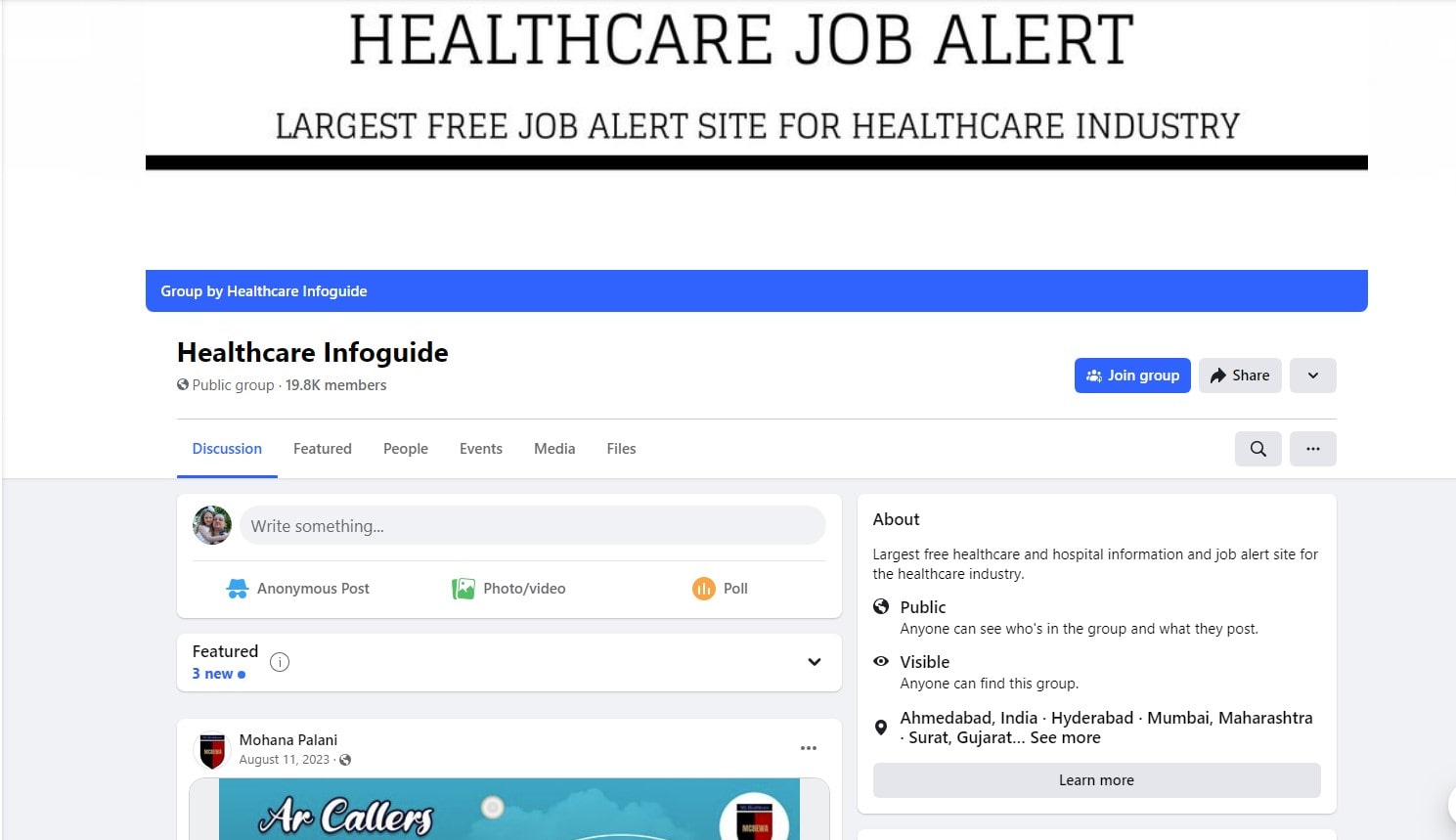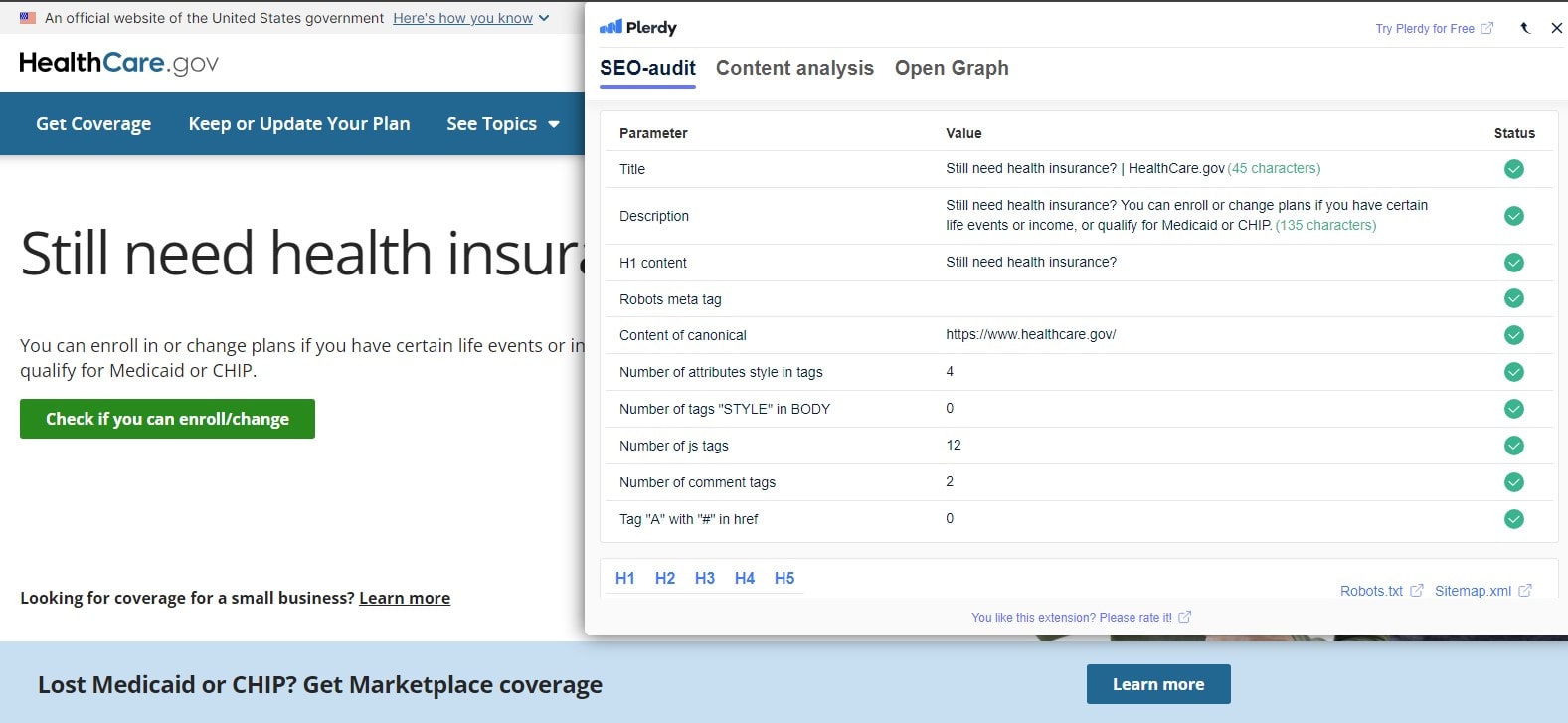To stand out in the competitive healthcare market online, you need a combination of SEO strategy and industry knowledge. If you want more people to see and interact with your website, you need this 10-step Guide to Healthcare SEO. Natural SEO can boost your healthcare content’s visibility and search rankings. Steps to improve your website’s search rankings and patient attractiveness. If you follow these steps to become a healthcare SEO specialist, your website can help patients. Remember to pay attention to the importance of website performance evaluation. Plerdy can boost your digital marketing strategy by evaluating trends and user behavior. Let’s jump in and change how people experience your healthcare website online.

Understanding the Basics of SEO in Healthcare
In the bustling intersection of healthcare and digital visibility, mastering SEO is less about following trends and more about understanding the unique rhythms of the healthcare industry. When SEO strategies align with the intricate search behaviors of healthcare seekers, the result is a digital presence that not only ranks but resonates.
A trifecta lies at the core of healthcare SEO – strategic keyword usage, content relevance, and user experience. These elements work in concert, ensuring that healthcare websites don’t just surface in search results but also provide value to those seeking medical information or services. For instance, a dermatology clinic’s website, optimized with specific skincare-related keywords, doesn’t merely aim to top search rankings; it seeks to connect with users looking for credible, informative content on skin health.
SEO in healthcare is a delicate balance. It’s about weaving in keywords like ‘healthcare’ and ‘search’ precisely, ensuring they complement rather than clutter the content. The approach here is twofold:
- Content Depth: Diving into niche healthcare topics with comprehensive yet digestible information.
- User Engagement: Crafting an intuitive user experience, from easy navigation to mobile-friendly designs.
This blend of in-depth content and user-centric design boosts search rankings and establishes trust and authority in the healthcare field. Effective SEO in healthcare is not just about playing by the search engine’s rules; it’s about creating a digital space where healthcare information is accessible, accurate, and patient-centric. This focus sets apart successful healthcare websites, marking them reliable beacons in the vast sea of online medical information.
Identifying Your Target Audience
In the intricate dance of healthcare SEO, pinpointing your audience is akin to finding a pulse in a sea of data. It’s about mapping the journey from a vague search query to a specific healthcare solution. This process is both an art and a science, requiring a deep understanding of how various audience segments interact with search engines.
Effective audience identification in healthcare SEO hinges on recognizing different user groups’ unique needs and search behaviors. For a pediatric clinic, this might mean targeting parents searching for child health tips, while a cosmetic surgery center might focus on individuals seeking aesthetic enhancement options.
The strategy unfolds in several key steps:
- Demographic Analysis: Assessing age, gender, location, and other demographic factors.
- Behavioral Insights: Understanding your audience’s search patterns, preferences, and healthcare needs.
- Psychographic Profiling: Delving into the attitudes, values, and lifestyles that drive healthcare choices.
Incorporating these insights into your SEO strategy ensures that your healthcare content reaches a broad audience and the right one. It’s about creating content that resonates, whether informative articles for health-conscious individuals or detailed service pages for those seeking specific treatments.
By aligning your SEO efforts with the distinct needs of your target audience, your healthcare website becomes more than a mere search result. It transforms into a valuable resource tailored to your intended audience’s specific healthcare queries and concerns. This approach elevates search rankings and fosters a deeper connection with those seeking healthcare information and services, making your site a go-to destination in the vast digital healthcare landscape.
Keyword Research for Healthcare Services

Delving into keyword research for healthcare SEO is like navigating a labyrinth of search queries, each pathway leading to a deeper understanding of patient needs and behaviors. This process is crucial for ranking in search engines and connecting patients with the healthcare services they seek.
In this endeavor, combining healthcare expertise with SEO savvy is key. It’s about honing in on terms that patients use when they turn to search engines for health-related information. The right keywords act as digital signposts, guiding potential patients through the maze of online information directly to your healthcare services.
Consider the following steps in your keyword research journey:
- Analyzing Search Trends: Keeping a pulse on how healthcare-related search queries evolve.
- Competitor Keyword Assessment: Gleaning insights from the keyword strategies of other healthcare providers.
- Long-Tail Keyword Exploration: Focusing on specific, less competitive keywords that align closely with the services offered.
Beyond just looking at search engine rankings, this methodical approach to keyword research covers all bases. It’s all about connecting people looking for health solutions with healthcare providers. Healthcare websites can better respond to customer questions and concerns by strategically choosing keywords that match their intent.
Search engine optimization (SEO) for dental offices focusing on local phrases or telemedicine platforms aiming for more general healthcare keywords has one common goal: to increase the likelihood that patients will discover your website when they conduct online searches for healthcare services. Digital connectedness happens at the crossroads of SEO knowledge and healthcare knowledge, paving the way for patients seeking health information and services in the wide online world.
Optimizing Website Structure for Healthcare SEO
In the realm of healthcare SEO, the structure of a website is a foundational element, pivotal in guiding search engines and users through a seamless journey of information discovery. This architectural aspect of SEO transcends mere aesthetics, playing a vital role in how effectively a healthcare site ranks and resonates with its audience.
Optimizing a healthcare website’s structure is akin to designing a modern medical facility – it must be intuitive, accessible, and informative. Users searching for healthcare services on a well-structured site find the right information fast and easily.
Key elements to focus on include:
- Logical Navigation: Making it easy for users to discover what they need without getting lost in the site’s pages.
- Mobile Responsiveness: Catering to the growing number of users who search for healthcare information on mobile devices.
- Fast Loading Times: Keeping pages light and quick to load, respecting users’ time and enhancing their experience.
By streamlining the website structure, healthcare providers can ensure that their site is not just a collection of pages but a cohesive unit that stands out in search results. Whether a page detailing a new medical procedure or a blog post discussing wellness tips, each element should be easily accessible and relevant to the user’s search queries.
This strategic approach to website structure in healthcare SEO bridges the gap between healthcare providers and those seeking health services or information. It’s about creating an online space where search engines and users can effortlessly find what they’re looking for, making the website a reliable and efficient resource in the healthcare sector.
Creating Quality Content for Healthcare Audiences

In healthcare, crafting quality content is not just about filling pages; it’s about stitching together words that heal, inform, and empower. As search engines increasingly prioritize content value, the role of SEO in healthcare becomes clear – to serve as a conduit between accurate health information and those who seek it.
Quality content in healthcare transcends the traditional SEO playbook. It combines empathetic communication, medical accuracy, and SEO optimization. This trifecta ensures that when individuals search for health-related topics, they discover content that not only ranks well but also resonates with their needs and concerns.
Key components of creating effective healthcare content include:
- Empathy and Understanding: Addressing patient concerns and queries with compassion and clarity.
- Evidence-based Information: Ensuring all content is grounded in reputable medical research and practices.
- SEO Best Practices: Integrating keywords naturally, enhancing readability, and optimizing for search engines.
Healthcare topics range from general wellness tips to specific medical conditions. For example, a dental clinic might produce content on oral hygiene, while a cardiology center could focus on heart health maintenance. In each case, the goal is to provide valuable, search-friendly content that guides and educates.
By merging healthcare expertise with SEO strategies, content creators can craft articles, blog posts, and web pages that stand out in search results and impact readers’ lives. It’s about more than just driving traffic; it’s about being a reliable source of health information in the digital age, where quality content can make a significant difference in someone’s search for health answers.
Local SEO Strategies for Healthcare Providers
In the healthcare industry, local SEO is the bridge that connects community members to the care they need right where they are. It’s a targeted approach, ensuring that when locals search for healthcare services, they find your clinic or practice at the top of their results. This localized SEO focus is more than just visibility; it’s about being a readily accessible healthcare resource for the community.
Crafting a local SEO strategy for healthcare involves a nuanced understanding of the community’s needs and how they seek healthcare services. For instance, a pediatric clinic in a suburban area will have a different local SEO approach compared to a specialist heart center in a bustling city. Each requires tailored tactics to reach their specific audience effectively.
Key steps in local SEO for healthcare providers include:
- Optimizing for Local Keywords: Integrating location-specific keywords relevant to healthcare services.
- Leveraging Local Listings and Directories: Ensuring accurate and consistent listings on platforms like Google My Business.
- Building Local Backlinks: Establishing connections with local businesses and healthcare directories.
This localized approach ensures that your website is among the top results when someone in your area searches for healthcare services. It’s about creating a digital presence that mirrors your physical one – accessible, reliable, and community-oriented.
Local SEO in healthcare goes beyond general SEO practices by focusing on geographical relevance and community engagement. It’s a strategy that boosts search engine rankings and solidifies your reputation as a trusted healthcare provider in your locality. For healthcare providers, local SEO is about being a trusted neighborhood health resource, not merely dominating search results.
Leveraging Social Media in Healthcare SEO

By connecting patients with doctors and other medical professionals, social media has become an indispensable tool for search engine optimization (SEO) in the healthcare industry. It’s not just about posting content; it’s about crafting a digital dialogue that boosts visibility and fosters trust. When used effectively, social media can amplify healthcare messages, making them more accessible and engaging, thus enhancing the overall SEO strategy.
Harnessing social media in healthcare SEO is like planting seeds in a fertile field – the content must be nurtured, relevant, and resonant with the audience. This approach transcends traditional marketing, tapping into the community-building potential of social platforms to foster a sense of connection and credibility.
Effective strategies include:
- Consistent Content Creation: Regularly posting healthcare tips, news, and updates.
- Engagement and Interaction: Actively responding to comments and messages, building a community.
- Use of Healthcare Hashtags: Enhancing visibility in health-related searches on social platforms.
Through these tactics, healthcare providers can drive more website traffic, enhance search rankings, and establish a stronger online presence. For example, a wellness clinic might share health tips on Instagram, while a hospital could use Twitter for health alerts and updates. Every channel offers distinct ways to reach diverse healthcare-seeking audiences.
In the context of healthcare SEO, social media goes beyond mere promotion. It’s a means to educate, engage, and empower audiences, making healthcare information more accessible and digestible. Using social media for healthcare SEO is more than just a fad; it’s a calculated move to humanize healthcare in the face of the impersonal and expansive internet.
Building Quality Backlinks for Healthcare Websites
Building high-quality backlinks is an art form that digital healthcare professionals must learn to succeed in search engine optimization. This facet of search engine optimization is more than simply a method; it’s a strategic component that increases the visibility and trustworthiness of healthcare websites. A well-planned backlink strategy is essential if a healthcare website wants to improve its SEO and establish itself as an expert in the field.
To optimize SEO through backlinks, healthcare websites should:
- Engage with reputable healthcare publications for link sharing enhancing SEO through association with industry leaders.
- Create compelling, shareable content that naturally attracts backlinks, boosting the website’s SEO.
- Utilize SEO tools to identify backlink opportunities in the healthcare niche.
- Monitor backlink quality regularly to ensure SEO benefits, removing anything that could harm the website’s SEO standing.
A healthcare website’s search engine optimization strategy can only be complete with these specialized backlink-building tactics. Together, they do wonders for the site’s search engine optimization and align it with the healthcare community’s requirements. A solid backlink profile backed by an effective SEO approach may make a big impact in the healthcare market, where trust is a crucial currency. A healthcare website needs to do more than just improve its search engine rankings to have an impact online; it must also build a reputation for reliability and trustworthiness.
Implementing Technical SEO for Healthcare Sites

In the intricate world of digital healthcare, implementing technical SEO is like laying a sturdy foundation for a skyscraper. The unseen yet crucial framework elevates a healthcare website’s standing in the digital space. Technical search engine optimization (SEO) is more than just a chore for healthcare website managers; it’s an effort to make their sites more visible, efficient, and user-friendly.
Key components in this intricate process include:
- Optimizing website speed to enhance user experience.
- Ensuring mobile responsiveness for on-the-go healthcare seekers.
- Implementing structured data to highlight key healthcare information.
- Maintaining secure browsing through HTTPS to protect user data.
When it comes to healthcare websites, these technical SEO considerations are paramount. They promise the site is secure, appealing, and easy to use. If your website is in the healthcare industry, where patients have a right to accurate and quickly available information, then technical SEO is necessary.
Deep industry knowledge is needed to adapt these technical components to healthcare websites. Technical SEO methods must be tailored to healthcare seekers’ demands, including easily navigable layouts and fast-loading informational websites. Online healthcare resources can strengthen their position as reliable by concentrating on these technical areas. The website is a reliable and user-friendly digital healthcare resource because of the strategic use of technical SEO that improves communication between doctors and anyone looking for information.
Monitoring and Analyzing SEO Performance
In the intricate tapestry of digital marketing, monitoring and analyzing SEO performance is akin to finding your rhythm in a complex dance. For healthcare websites, this is not just routine; it’s critical for staying in tune with the evolving SEO melody. An SEO score indicates a website’s digital health in this field.
Key steps in this process include:
- Regularly reviewing website traffic and user engagement metrics.
- Analyzing keyword rankings to ensure alignment with healthcare topics.
- Evaluating backlink quality to bolster website authority.
- Conducting competitor analysis to stay abreast of SEO trends.
This SEO strategy goes beyond mere statistics to better understand your healthcare website’s readership. A healthcare website’s ability to comprehend SEO and act upon data is enhanced by analytics. This study makes changes to SEO that will help people looking for healthcare.
Healthcare websites must monitor, analyze, and change to sustain an online presence. The ever-shifting landscape of search engine optimization (SEO) directly affects how your website interacts with its users. Healthcare websites manage and thrive in the digital ecosystem, staying current, accessible, and authoritative for search engines and users.
Staying Updated with SEO Trends in Healthcare
As the digital pulse of healthcare quickens, SEO remains a vital lifeline for any website aspiring to thrive in this competitive sector. Navigating SEO trends in healthcare is akin to a constant dance – steps change, rhythms vary, but the dance floor – the digital healthcare landscape – stays bustling. Websites that want to be successful nowadays must have SEO specialists on staff who also have a deep understanding of healthcare.
In this ever-evolving digital age, healthcare websites must:
- Regularly update content to reflect current healthcare discussions and SEO best practices.
- Leverage keywords that resonate with both healthcare professionals and patients.
- Implement SEO-friendly website designs that cater to user experience and accessibility.
- Monitor and adapt to Google’s algorithm updates, ensuring compliance and relevance.
This approach ensures your healthcare website keeps pace and sets the tempo in the digital healthcare symphony. SEO in healthcare is about harmonizing medical accuracy with search engine appeal. It’s about ensuring your website doesn’t just exist but flourishes and reaches its intended audience effectively.
To stay ahead, healthcare websites must adapt their SEO techniques to search engines’ algorithms and the ever-changing healthcare sector. This dynamic blend of agility and foresight will make your healthcare website a trustworthy and authoritative digital healthcare destination.
Conclusion
As we conclude this essay on healthcare SEO, SEO is more than a strategy; it’s important to a successful healthcare website. Search engine optimization (SEO) for healthcare websites and its significant impact on audience engagement can be better understood by following these ten rules.
In summary, effective Healthcare SEO involves:
- Content customization for SEO and healthcare.
- Ensuring website design is user-friendly, mobile-responsive, and SEO-optimized.
- Update the webpage with useful content regularly.
- Building a robust network of quality backlinks from reputable healthcare sources.
Healthcare SEO is an ever-changing landscape, which is clear from this guidance. It requires both technical expertise and familiarity with the specifics of the healthcare system. Implementing these steps will ensure your healthcare website ranks well in search engines and genuinely serves and engages its visitors.
Remember, in healthcare, where accuracy and trust are paramount, SEO is not just about algorithms and keywords. Making vital healthcare data accessible to those in need is the main focus. The healthcare community globally benefits greatly from websites that employ these search engine optimization tactics to boost their online presence.
